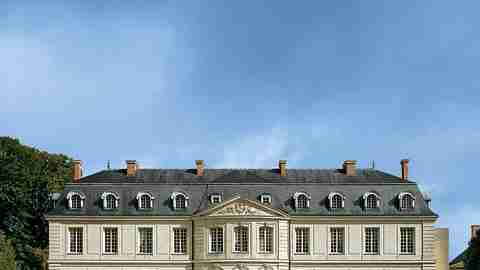August 09,2022
Designers' Own Homes: Timothy Corrigan
by David Stewart
View Slideshow

Some of the most interesting interior designers come to their careers by unorthodox paths. Until 1996 Timothy Corrigan was a Mad Men -like dynamo advertising executive at Saatchi & Saatchi who, while based in Paris and later in New York, liked to fix up places in his spare time. Little by little, friends began asking him for help. He had no training in the field, but he had a good eye, and he learned fast. Some of his design work was published. Soon he was being engaged to take on entire projects. Before he quite knew what was happening, he had a day job and a night job, both enormously demanding.
"Then my father died quite suddenly," Corrigan recalls. "I was traveling all the time for my advertising job and working nights and weekends on the design projects. I had to ask myself what made me truly happy. And the answer was easy."
From the polish Corrigan brings to his design work, it's not easy to tell that he is a relative newcomer to the field—and a fearless one at that: While he was living in Paris, Corrigan took on the restoration of first a manor house, Le Thuit in Normandy, and then a château, the Château de Gallerande in the Loire Valley (see Architectural Digest , September 2005 ). Now he has completed the Château du Grand-Lucé, his most ambitious project by far.
No one would ever accuse Timothy Corrigan of being afraid of a challenge. When he submitted an application to buy the Château du Grand-Lucé from the French government, the custodian of the building and its resplendent gardens, he went up against developers and hoteliers; he was the only private applicant, and certainly the only American, among them. L' Architecte des Bâtiments de France, the institution that protects historic French monuments, declared that the château was a precious example of French Enlightenment architecture and they didn't want it reconfigured. "American though I was," says Corrigan, "it became mine."
Designed by Mathieu de Bayeux for Jacques Pineau de Viennay, baron de Lucé, it was built between 1760 and 1764. De Viennay, who directed its design from afar by correspondence, is said to have been so overwhelmed by its beauty that he died of a heart attack the day he came to see it in person. Because his daughter and heir was such a benevolent landowner, the château was spared during the Revolution; in fact, its salon, painted by Jean Baptiste Pillement, is one of only two of his interiors to survive intact anywhere in France. Enlightenment visitors included Voltaire, Rousseau and Diderot. Later, during World War II, paintings from the Louvre were hidden under the stage of the theater, and for a period it was used as a hospital for wounded British soldiers.
The château was transferred from descendants to the government in 1948. Over the years the state replaced its roof, but its focus was on the gardens. The house Corrigan bought needed everything: electrical systems, baths, a kitchen. Centuries of old paint had to be removed. There were cavernous, and numerous, empty rooms to restore and furnish. "No one in my world supported me. Not my associates at work, not my partner, Kathleen [Scheinfeld]," says Corrigan, "They all thought I was mad. I, however, thought I had a spectacular opportunity."
Spectacular—and also expensive and complex: "Of course, because the château is protected, I could not reconfigure the interiors. To create a bathroom, I simply took away a bedroom. To bring a kitchen into the house, I had to create a wall in front of the original paneling and hang cupboards on it. If I chose a paint color, I had to seek approval from the boiserie expert at the Musée Carnavalet in Paris. When I planted a tree I liked, someone from the government appeared and said, Oh, you can't plant that tree. It wasn't in France in 1760.' When I planted a different one, they said, Well, that was in France, but it would never have been at this château.' " Corrigan adds dryly, "Since when was owning a château ever meant to be easy?"
As for the fun part—furnishing the rooms—Corrigan knew from the outset that he did not want to live in a historical re-creation. His plan was to make the château a country home. Furniture ranged from correct period pieces to strong examples from the middle of the 20th century. "I think I approached the project with more of an English country house mentality."
Corrigan claims that he simply kept buying furniture he loved until he thought he had enough. And so it happened that he fitted out the entrance hall with a collection of antler trophies and a French limed-oak table from the 1940s. In the Salon Pillement, he brightened the boiserie. The grand salon he painted green, as a link to the garden, while in the dining room, he struggled to get the experts to agree to a terra-cotta palette with rust and gold accents.
Timothy Corrigan is the sort of fellow who can sound charming when he says that he's done up "only" 13 bedrooms. His infectious enthusiasm for this daunting house, which he visits whenever he works at his Paris office and during the summer, leads him to declare, "There is no place in the world I feel happier or more content. When I go there, I say to myself, This is why I work as hard as I do. It is the thing that keeps me going."






